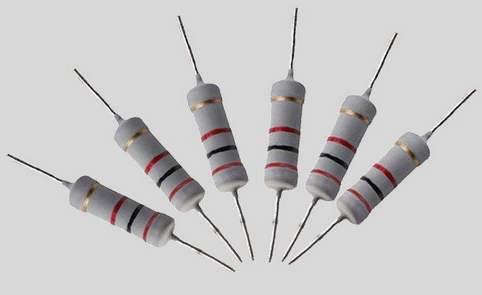Resistor
The resistance of the conductor to the current is called the resistance of the conductor. Resistance (Resistor, usually represented by “R”) is a physical quantity that in physics represents the size of the conductor’s hindrance to current. The greater the resistance of the conductor, the greater the resistance of the conductor to the current. Different conductors generally have different resistances, and resistance is a property of the conductor itself. The resistance of a conductor is usually represented by the letter R. The unit of resistance is ohms, abbreviated as ohms, and the symbol is Ω.

Introduction
The current in a metal conductor is formed by the directional movement of free electrons. Free electrons frequently collide with metal positive ions in motion, and the number of collisions per second is as high as about 1015. This collision hinders the directional movement of free electrons, and the physical quantity that represents this hindrance is called resistance. Not only metal conductors have resistance, but other objects also have resistance. The resistance of a conductor is determined by its own physical conditions, and the resistance of a metal conductor is determined by its material properties, length, thickness (cross-sectional area) and operating temperature.
Resistance is a physical quantity that describes the conductivity of a conductor and is represented by R. The resistance is defined by the ratio of the voltage U across the conductor to the current I through the conductor, namely:
Therefore, when the voltage at both ends of the conductor is constant, the greater the resistance, the smaller the current passed; conversely, the smaller the resistance, the greater the current passed. Therefore, the size of the resistance can be used to measure the strength of the conductor’s blocking effect on the current, that is, the quality of the conductivity. The magnitude of resistance is related to factors such as the material, shape, volume, and surrounding environment of the conductor.
Resistivity is a parameter describing the conductivity of a conductor. For a cylindrical uniform conductor made of a certain material, its resistance R is proportional to the length L and inversely proportional to the cross-sectional area S, namely:

In the formula, ρ is the proportional coefficient, which is determined by the material of the conductor and the surrounding temperature, and is called the resistivity. Its International System of Units (SI) is ohm·meter (Ω·m). The relationship between the resistivity of general metals and temperature at room temperature is:
Where ρ0 is the resistivity at 0°C; α is the temperature coefficient of resistance; the unit of temperature t is Celsius. The resistivity of semiconductors and insulators is different from that of metals, and they do not change linearly with temperature. When the temperature rises, their resistivity decreases sharply. Shows the nature of non-linear changes.